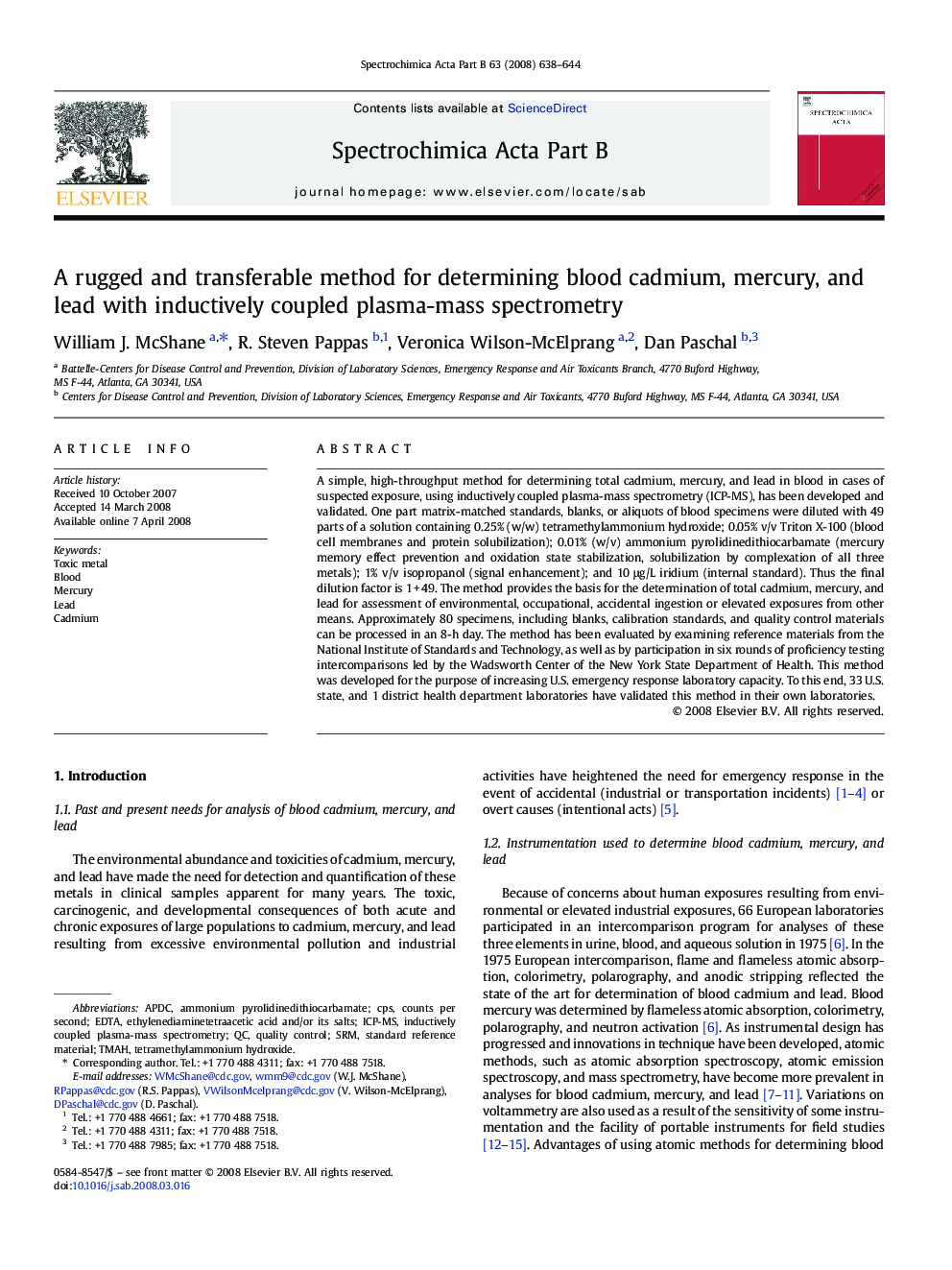| Article ID | Journal | Published Year | Pages | File Type |
|---|---|---|---|---|
| 1240492 | Spectrochimica Acta Part B: Atomic Spectroscopy | 2008 | 7 Pages |
A simple, high-throughput method for determining total cadmium, mercury, and lead in blood in cases of suspected exposure, using inductively coupled plasma-mass spectrometry (ICP-MS), has been developed and validated. One part matrix-matched standards, blanks, or aliquots of blood specimens were diluted with 49 parts of a solution containing 0.25% (w/w) tetramethylammonium hydroxide; 0.05% v/v Triton X-100 (blood cell membranes and protein solubilization); 0.01% (w/v) ammonium pyrolidinedithiocarbamate (mercury memory effect prevention and oxidation state stabilization, solubilization by complexation of all three metals); 1% v/v isopropanol (signal enhancement); and 10 μg/L iridium (internal standard). Thus the final dilution factor is 1 + 49. The method provides the basis for the determination of total cadmium, mercury, and lead for assessment of environmental, occupational, accidental ingestion or elevated exposures from other means. Approximately 80 specimens, including blanks, calibration standards, and quality control materials can be processed in an 8-h day. The method has been evaluated by examining reference materials from the National Institute of Standards and Technology, as well as by participation in six rounds of proficiency testing intercomparisons led by the Wadsworth Center of the New York State Department of Health. This method was developed for the purpose of increasing U.S. emergency response laboratory capacity. To this end, 33 U.S. state, and 1 district health department laboratories have validated this method in their own laboratories.
